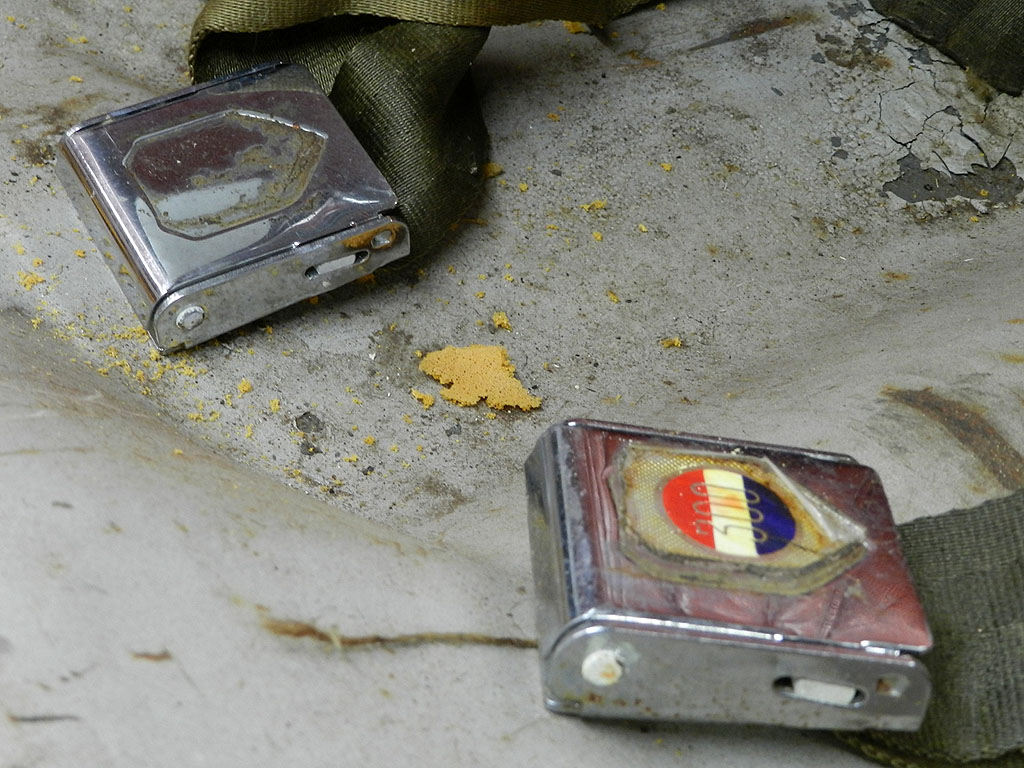Page 2
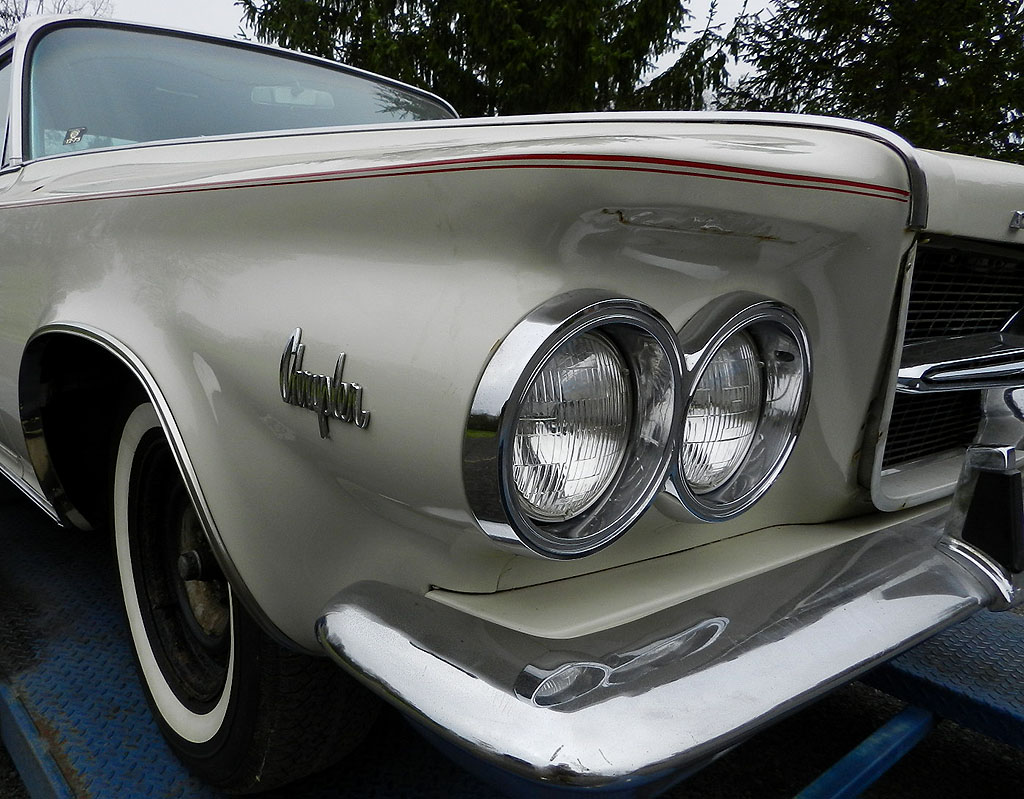
In November 2023 the garage schedule had an opening so we trailered the car from storage. Now we can jump into the discovery process with both feet. There is a lot we have to learn about this car. It was said to be a California car and from a first look, this car is super solid. There should be a lot to work with here.

I think the wheels on the car are "Road Wheels". They are rusty and the driver side go flat in a few hours. Better wheels were mounted.
The driver side hubs have left hand lug nuts as they are supposed to. While the rear wheel was off, I could see a new brake hose and steel line over the axle housing. There was also this brace bolted to the frame in the wheel well. There is a similar brace on the passenger side so I think it might have been for some suspension component (swaybar?) that was never installed.
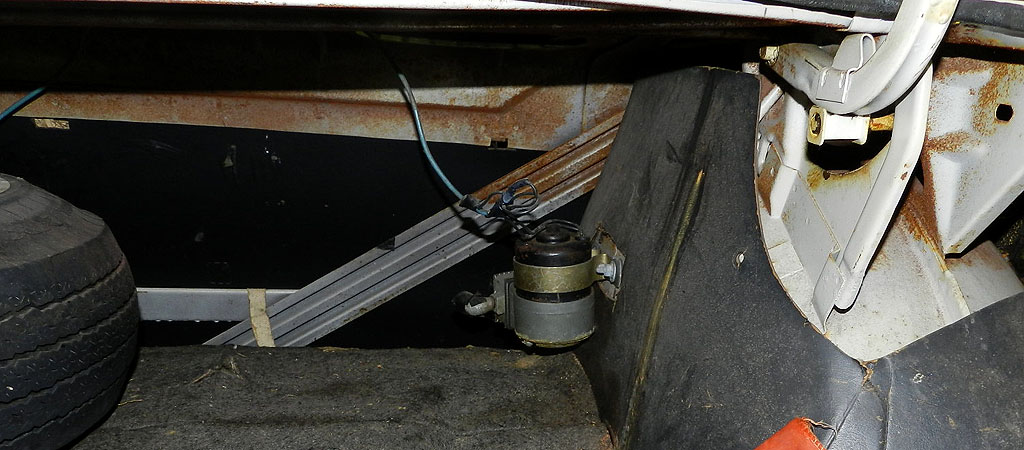 There is an electric fuel pump mounted in the trunk. It is not a style of pump I have seen before and pumps are not often installed in the trunk. We are not going to use it, and other than the choice of mount location, it looks like a good job of installation.
There is an electric fuel pump mounted in the trunk. It is not a style of pump I have seen before and pumps are not often installed in the trunk. We are not going to use it, and other than the choice of mount location, it looks like a good job of installation.
The strangest strange thing on this car has to be the front seat belts. The belts are a 3-point style with a shoulder belt coming over the seat back from an anchor point just before the rear seat. The installation again seems to be pretty good but I don't think we will keep this one either.

|

|
 Power Windows: On this car the electric windows work only when the key is on (or in the accessory position). The black J does this as well. The picture to the right shows this unique relay. The wiring diagram does not show this relay. There is no doubt what the relay does; it is switched by the ignition key and when the relay is disconnected, the power windows don't work. We did a survey of J owners. With 5 replies, 3 are windows key on and 2 are key off.
Carl Bilter, the 300 Club consultant for the J, did some research: 1968 was the first year for Chrysler to install the relay via the ignition to control the power windows. So all 1967 and earlier should work without a key, wired directly to BAT.
The prevailing opinion is that it was done to deter theft. Previously, a coat wire inserted around the window could be used to trigger a power window switch and lower the window.
Power Windows: On this car the electric windows work only when the key is on (or in the accessory position). The black J does this as well. The picture to the right shows this unique relay. The wiring diagram does not show this relay. There is no doubt what the relay does; it is switched by the ignition key and when the relay is disconnected, the power windows don't work. We did a survey of J owners. With 5 replies, 3 are windows key on and 2 are key off.
Carl Bilter, the 300 Club consultant for the J, did some research: 1968 was the first year for Chrysler to install the relay via the ignition to control the power windows. So all 1967 and earlier should work without a key, wired directly to BAT.
The prevailing opinion is that it was done to deter theft. Previously, a coat wire inserted around the window could be used to trigger a power window switch and lower the window.

|
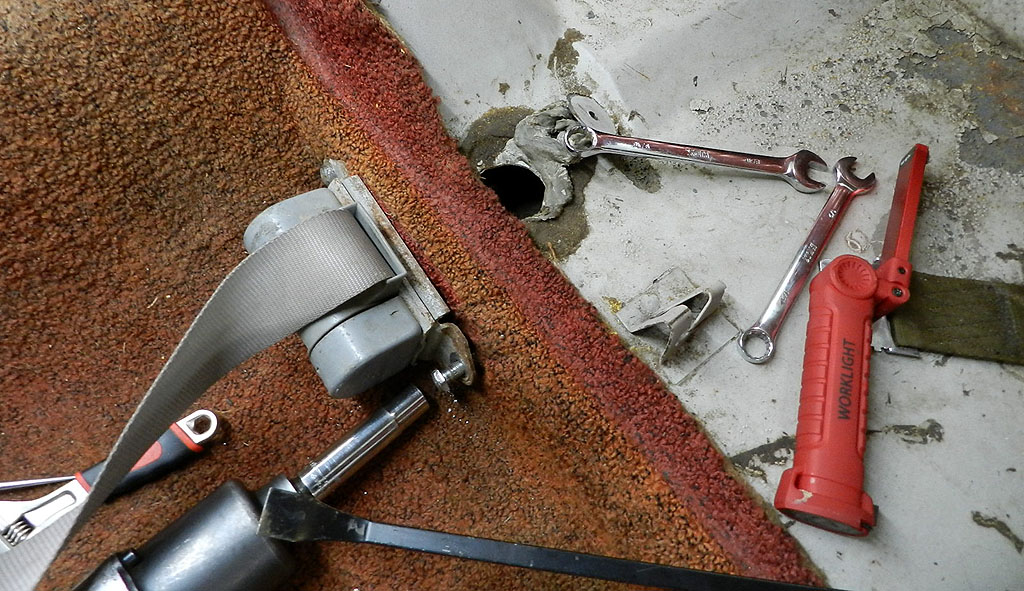
|
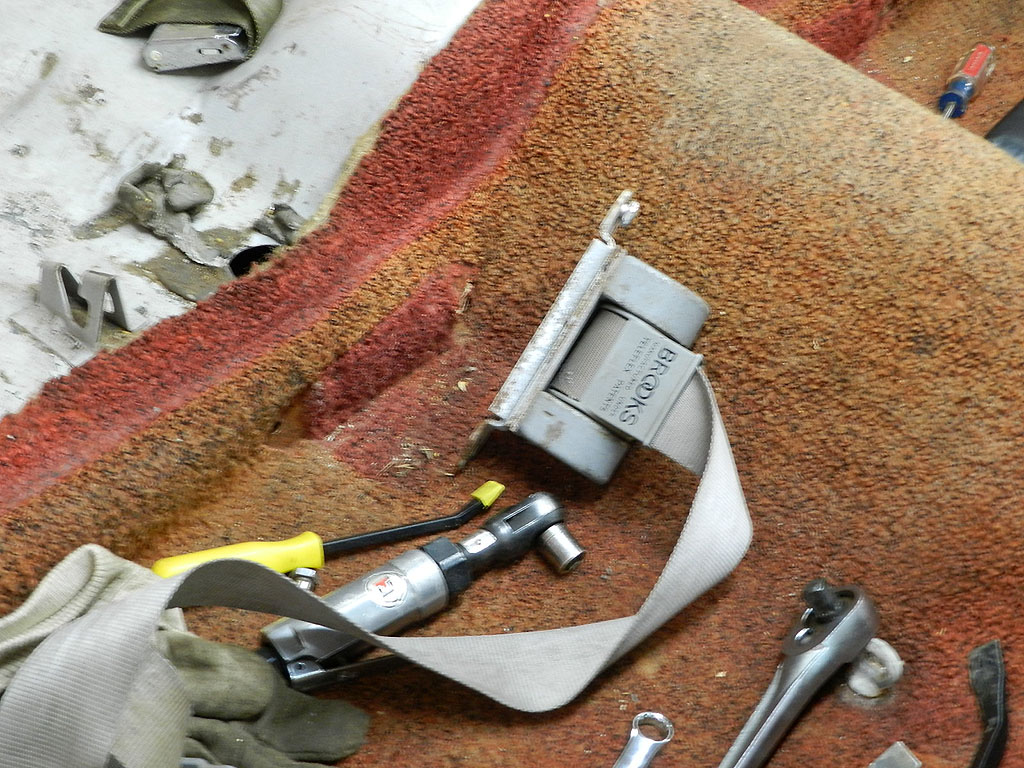
|

|
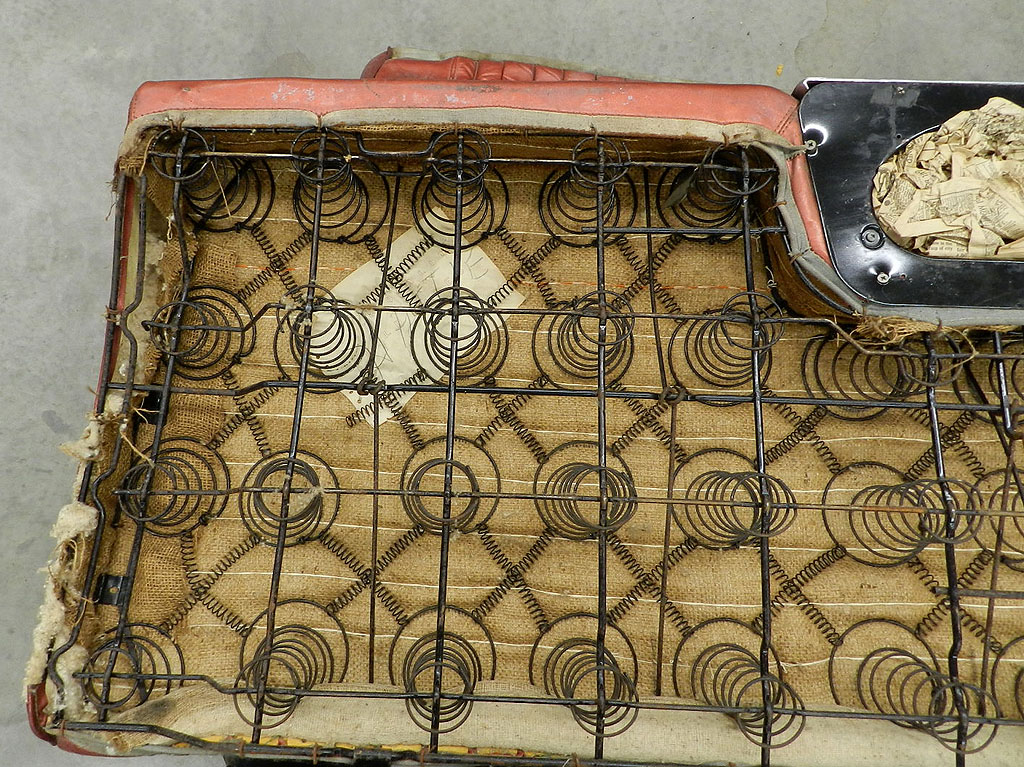
|

|
The upper cushion of the rear seat was removed and the build sheet was discovered. It is not for this car as the sequence number and paint codes do not match.
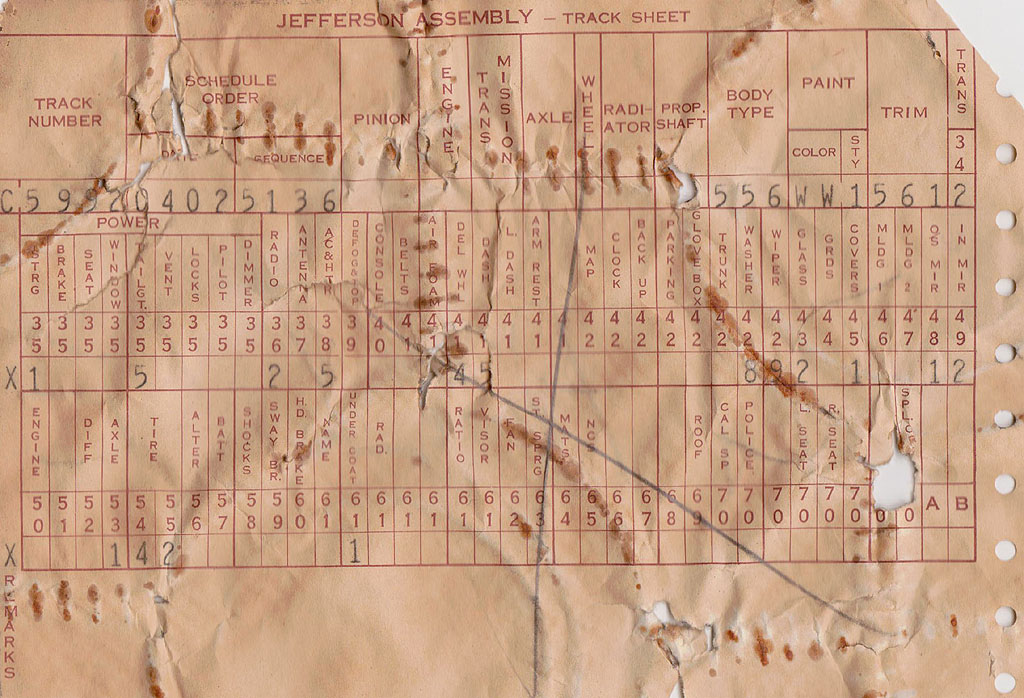
Our spare windshield had been stored in the trunk and I thought it was time
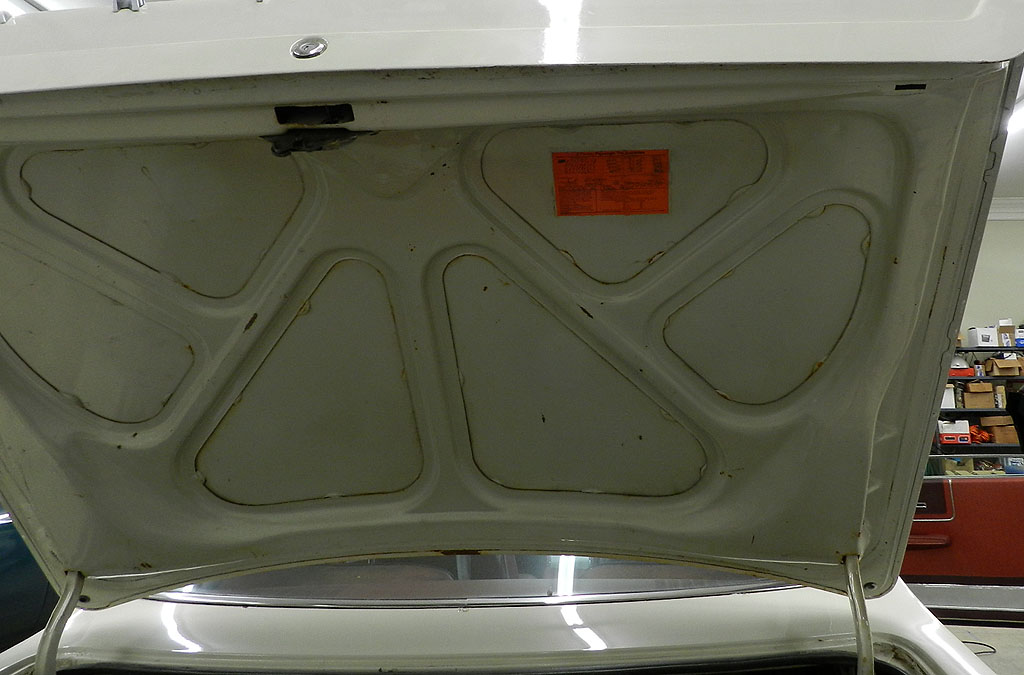
 to find a safer place to store it. I also now had a chance to evaluate the condition of the trunk. I was pleased to find an original carpet in very good shape and no signs of rust anywhere. I noticed an orange sticker on the trunk lid. It was for tires from J C Penny. Dated May 22, 1974, the customer was L. E. Winter, 5970 Argyle , San Bernadino, CA. The odometer miles at that time was 10,857. Now we have a solid connection to California.
to find a safer place to store it. I also now had a chance to evaluate the condition of the trunk. I was pleased to find an original carpet in very good shape and no signs of rust anywhere. I noticed an orange sticker on the trunk lid. It was for tires from J C Penny. Dated May 22, 1974, the customer was L. E. Winter, 5970 Argyle , San Bernadino, CA. The odometer miles at that time was 10,857. Now we have a solid connection to California.

 Since we will be working on the rear quarter windows, we get more room to work if the front seats are out. The passenger seat is light since it is not power. The 4 mounting nuts spun off quick and easy (no rust). But there was plenty of yellow snow telling us the foam is cooked. The return spring is fractured on this seat but we have spares. I could also now see that the front seats had been painted. But the floors are super solid and that is a fair trade off.
Since we will be working on the rear quarter windows, we get more room to work if the front seats are out. The passenger seat is light since it is not power. The 4 mounting nuts spun off quick and easy (no rust). But there was plenty of yellow snow telling us the foam is cooked. The return spring is fractured on this seat but we have spares. I could also now see that the front seats had been painted. But the floors are super solid and that is a fair trade off.

 The driver seat is power and is removed to find one broken seat mount bolt and buckets of yellow snow, even worse than the passenger side. It really doesn't matter how bad the seat foam is; past a certain point you are better off replacing it with new. While the seat is out, time to lubricate the power seat mechanism and test the motors. All is OK here and with the seats removed, access to the under dash area is much easier.
The driver seat is power and is removed to find one broken seat mount bolt and buckets of yellow snow, even worse than the passenger side. It really doesn't matter how bad the seat foam is; past a certain point you are better off replacing it with new. While the seat is out, time to lubricate the power seat mechanism and test the motors. All is OK here and with the seats removed, access to the under dash area is much easier.
The headlight switch needs to be replaced because
 the knob does not pull easily and there are no instrument panel lights. New switches are available although I learned some will not work. In this picture you can see how the switch body on the upper switch is located further back from the nose plate than the other switch. This upper switch, although labeled for 1963 Chrysler, will work electrically and connect to the harness, but it will not catch the pull knob shaft. I found a new switch for a 1962 Chrysler (NAPA HL6571). That switch works perfectly and was installed. We then had to chase through the instrument panel finding burned out lamps or those that needed their ground connections brightened. In the end the dash had a pleasant full array of lighting.
the knob does not pull easily and there are no instrument panel lights. New switches are available although I learned some will not work. In this picture you can see how the switch body on the upper switch is located further back from the nose plate than the other switch. This upper switch, although labeled for 1963 Chrysler, will work electrically and connect to the harness, but it will not catch the pull knob shaft. I found a new switch for a 1962 Chrysler (NAPA HL6571). That switch works perfectly and was installed. We then had to chase through the instrument panel finding burned out lamps or those that needed their ground connections brightened. In the end the dash had a pleasant full array of lighting.
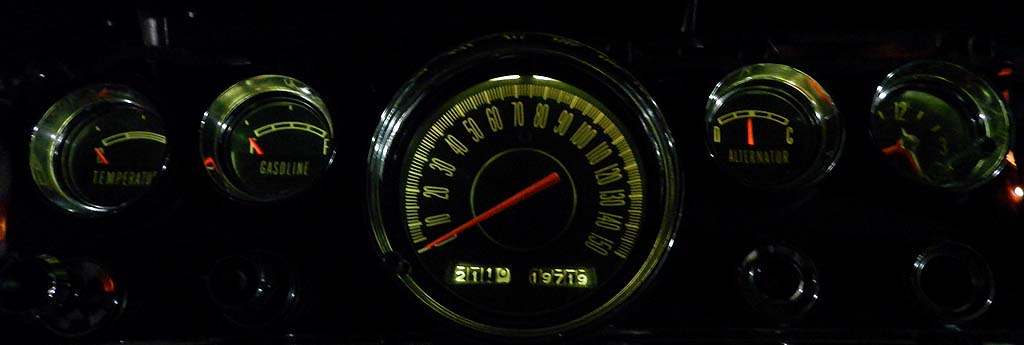
The headlight switch knob needed to be repainted.
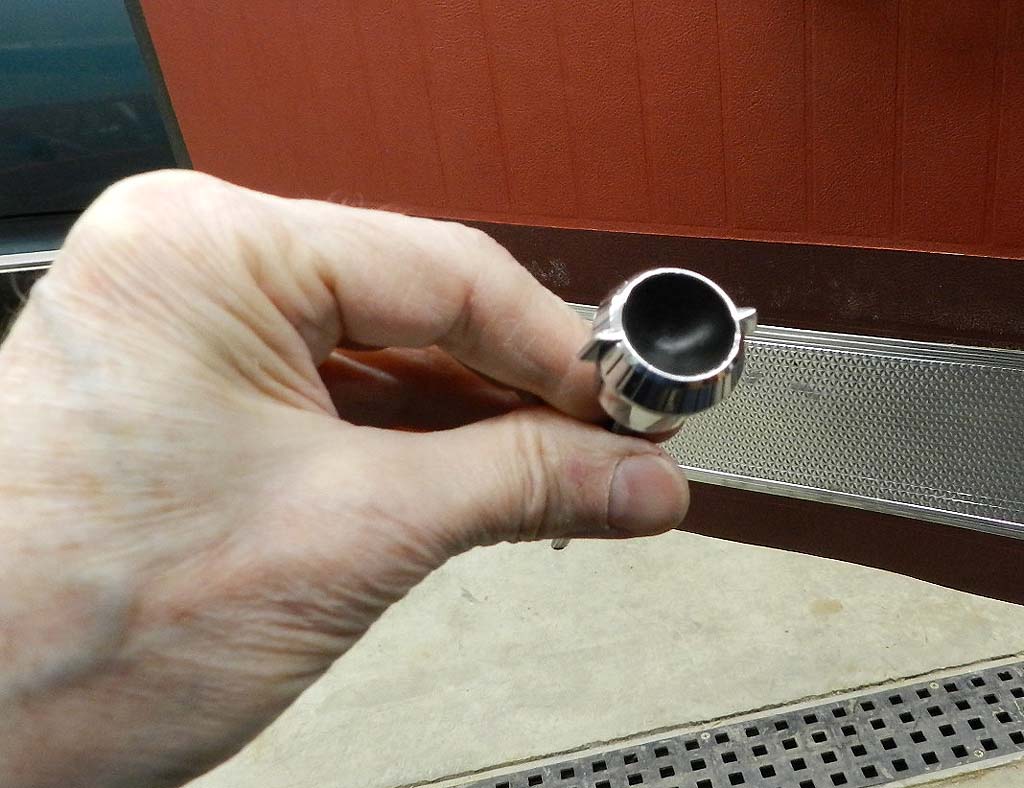
 I used Eastwood under hood flat black and it came out nice. The transmission push button lamp was burned out. It is nestled deep among the push button levers and can be difficult to access.
Additionally, just getting the faceplate off requires removal of dash trim, bezels, top plates, and the entire instrument panel has to be loosened to release the trapped transmission bezel. A lot of work for a little lamp.
I used Eastwood under hood flat black and it came out nice. The transmission push button lamp was burned out. It is nestled deep among the push button levers and can be difficult to access.
Additionally, just getting the faceplate off requires removal of dash trim, bezels, top plates, and the entire instrument panel has to be loosened to release the trapped transmission bezel. A lot of work for a little lamp.
The gas tank was removed. From the outside it looked fine. From the inside, it was gruesome. Rust everywhere. The fuel sender was missing the sock, the float, and was corroded. A new tank is needed. It turns out no one makes new tanks for the 1963.
 This is the last year to use the solid filler neck; 64 starts the rubber grommet and detachable filler. You can use a 1964 tank, and they make new 1964 tanks, but you have to reuse your filler neck. I was not sure I had a spare filler neck, but I had a spare 1962 tank handy and decided to test install that one. It fits, but the filler neck is so long you can barely get the gas cap on or off. In a pinch you could shim the rear bumper to give clearance. I was able to find a 64 filler so we will install a new 64 tank.
This is the last year to use the solid filler neck; 64 starts the rubber grommet and detachable filler. You can use a 1964 tank, and they make new 1964 tanks, but you have to reuse your filler neck. I was not sure I had a spare filler neck, but I had a spare 1962 tank handy and decided to test install that one. It fits, but the filler neck is so long you can barely get the gas cap on or off. In a pinch you could shim the rear bumper to give clearance. I was able to find a 64 filler so we will install a new 64 tank.
 The transmission mount is missing the spring and special shoulder bolt, and the mount itself is collapsed. New mounts are available at Rock (part number EM-5087). I was able to find the spring and bolt in spare parts.
The transmission mount is missing the spring and special shoulder bolt, and the mount itself is collapsed. New mounts are available at Rock (part number EM-5087). I was able to find the spring and bolt in spare parts.
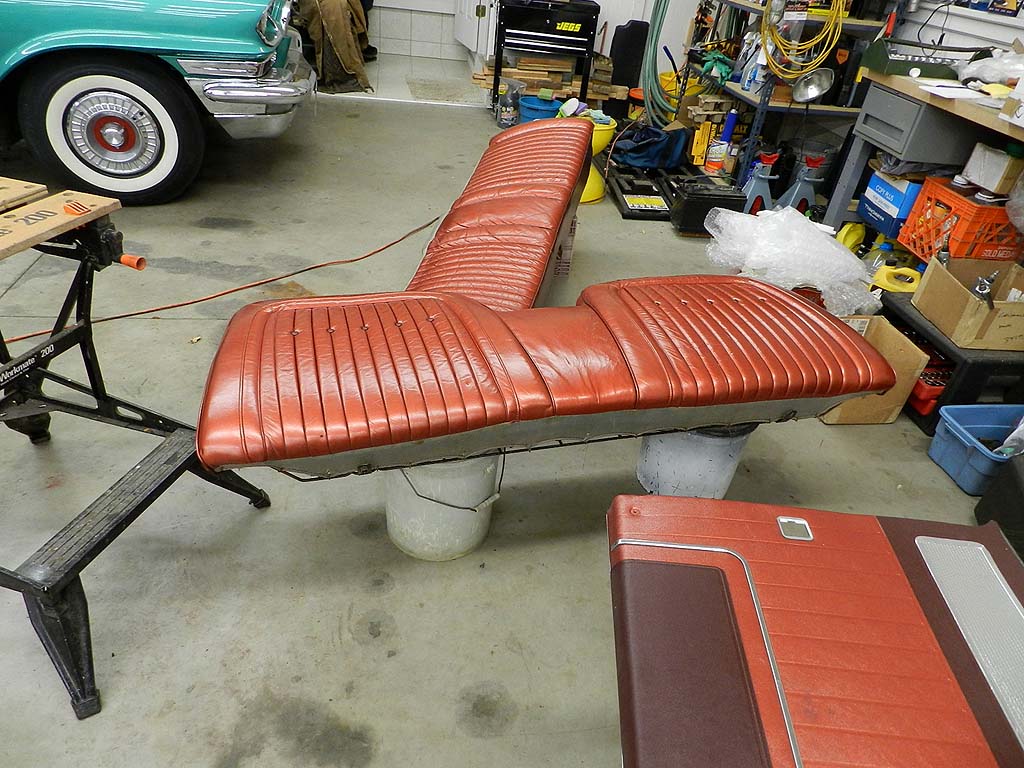 While the interior is out, the seats and door panels were cleaned and conditioned with Lexol. They might not look too bad in pictures, but these seats are pretty well cooked from the California heat and are beyond the point of recovery. The carpet is also badly faded from the sun. Legendary is considering a "Freshening Kit" for the J which would include new carpet and console pieces. At this point I don't know what I will use for an interior, but we have a long list of other things to do while this is sorted out.
While the interior is out, the seats and door panels were cleaned and conditioned with Lexol. They might not look too bad in pictures, but these seats are pretty well cooked from the California heat and are beyond the point of recovery. The carpet is also badly faded from the sun. Legendary is considering a "Freshening Kit" for the J which would include new carpet and console pieces. At this point I don't know what I will use for an interior, but we have a long list of other things to do while this is sorted out.
 For some reason, the brake light switch had been removed; the wires cut. It was easy enough to get one from spares and install. The heater core is missing. I brought over a spare from the warehouse.
For some reason, the brake light switch had been removed; the wires cut. It was easy enough to get one from spares and install. The heater core is missing. I brought over a spare from the warehouse.
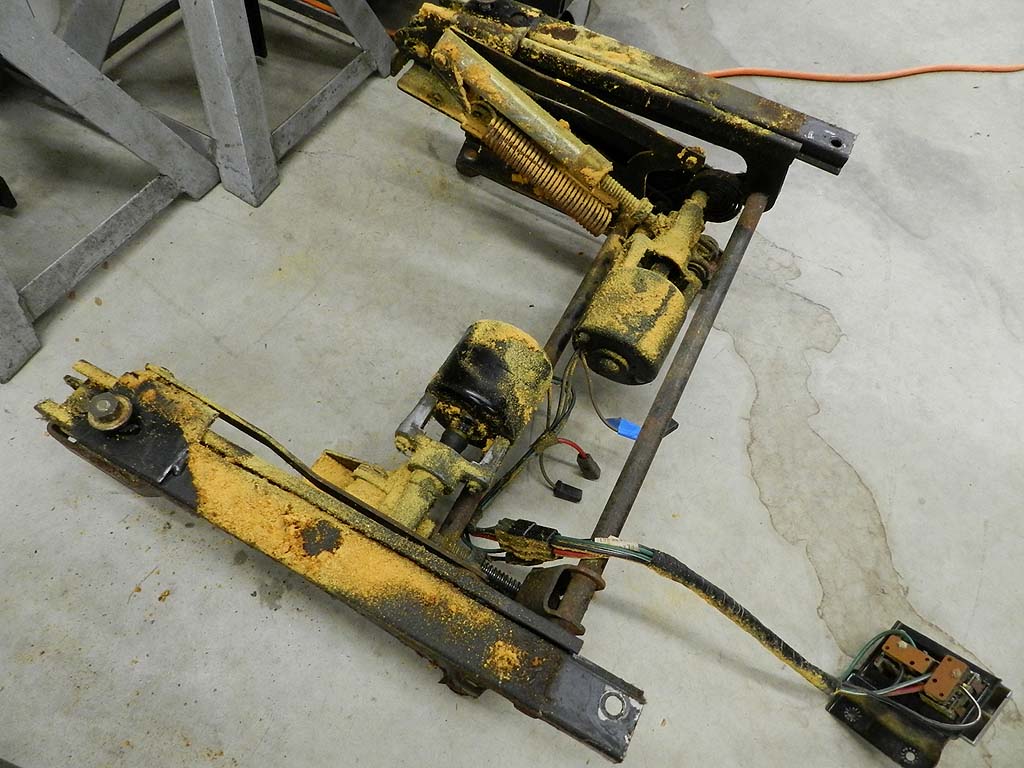 The power seat mechanism was coated in yellow snow. It got a good cleaning and lubrication. You can test these outside of the car; power to the red wire and ground both of the brown wires. Fore and aft will be no problem but the raise and lower won't work without assistance. There are large springs to help with the raise. Going down without the weight of the seat and the driver, the motor won't be able to overpower the springs. A pair of vice grips on the cross rod will help.
The power seat mechanism was coated in yellow snow. It got a good cleaning and lubrication. You can test these outside of the car; power to the red wire and ground both of the brown wires. Fore and aft will be no problem but the raise and lower won't work without assistance. There are large springs to help with the raise. Going down without the weight of the seat and the driver, the motor won't be able to overpower the springs. A pair of vice grips on the cross rod will help.
We removed the rear quarter interior panels and found this is the first time they had been off; the original vapor barrier was there, in perfect condition, We also found this tag wired to the body. The print is faded and can't be read; I wonder why it was there.
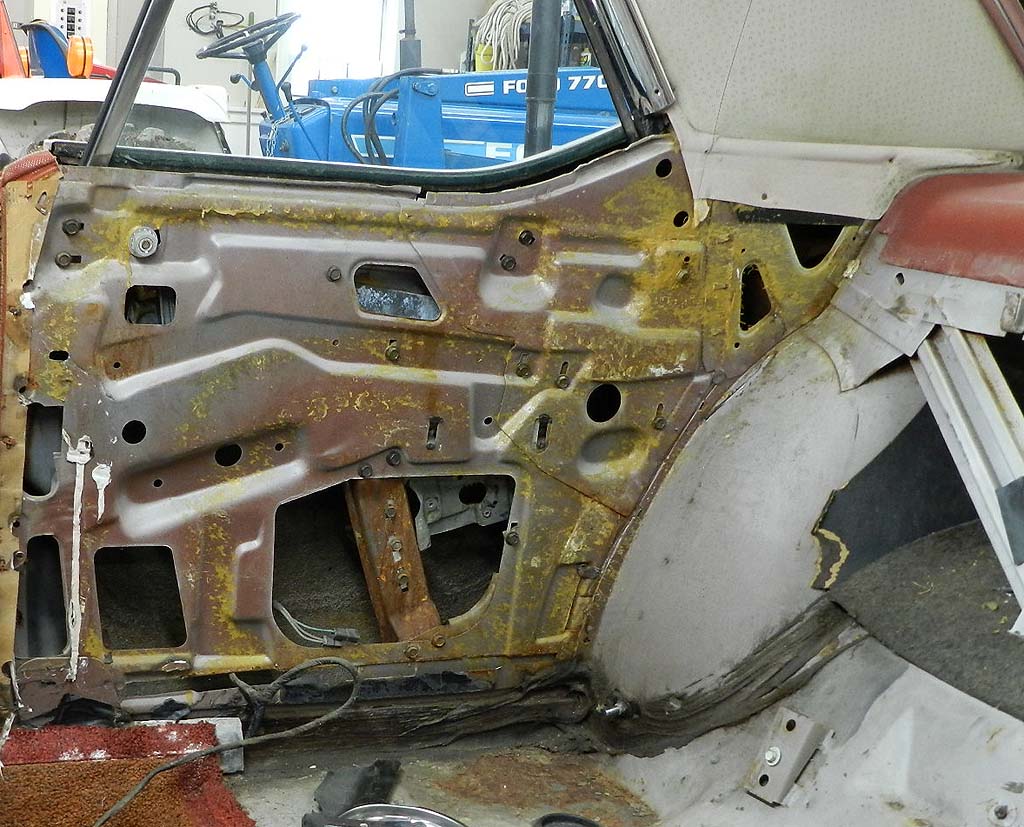
|

|
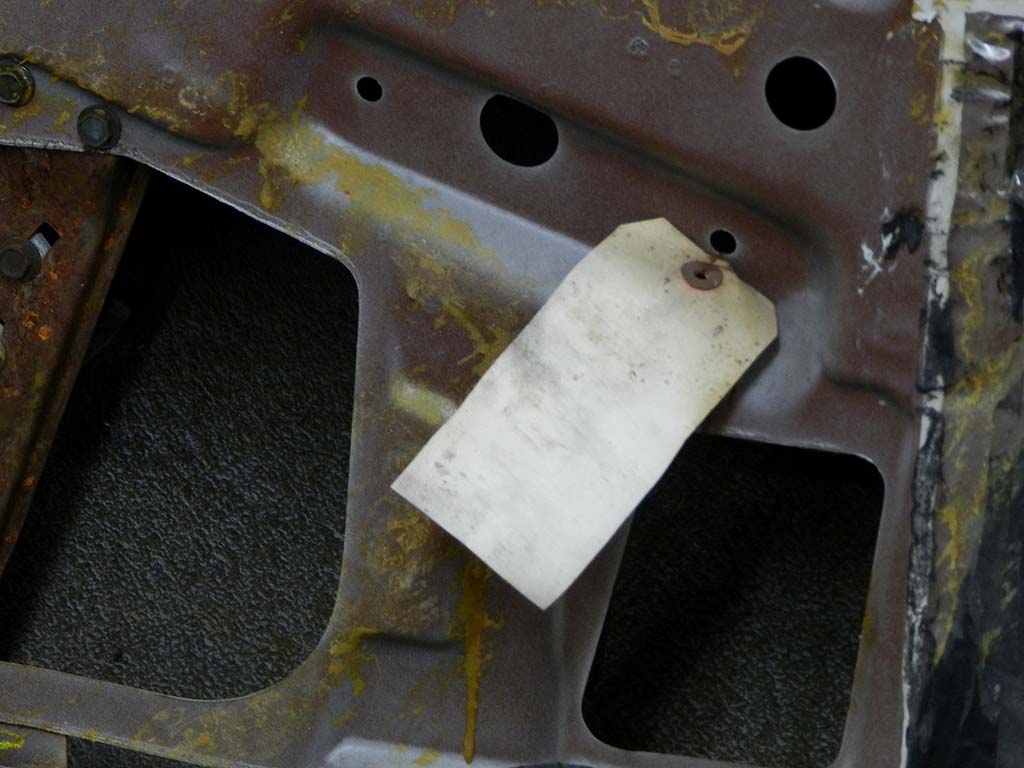
|
